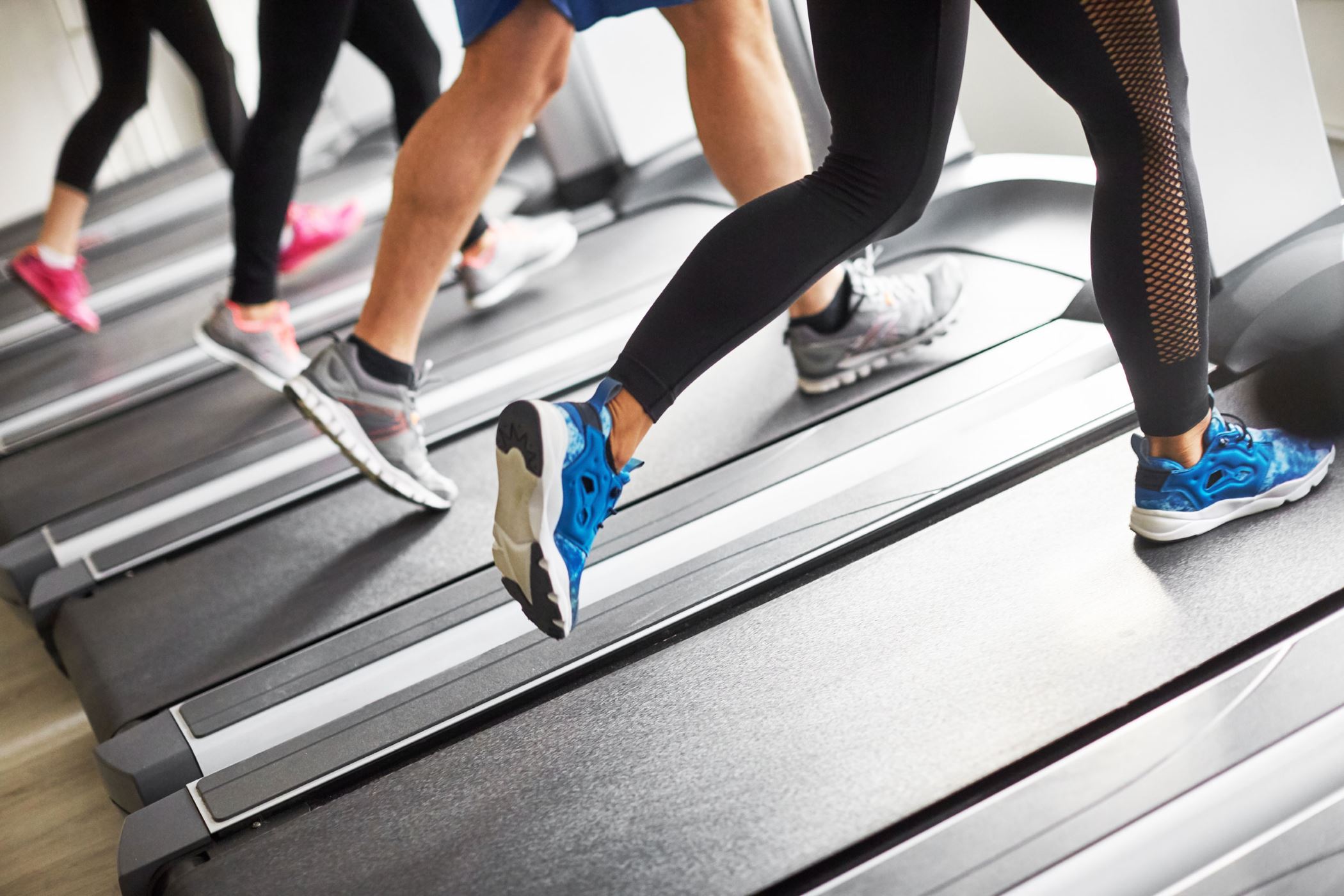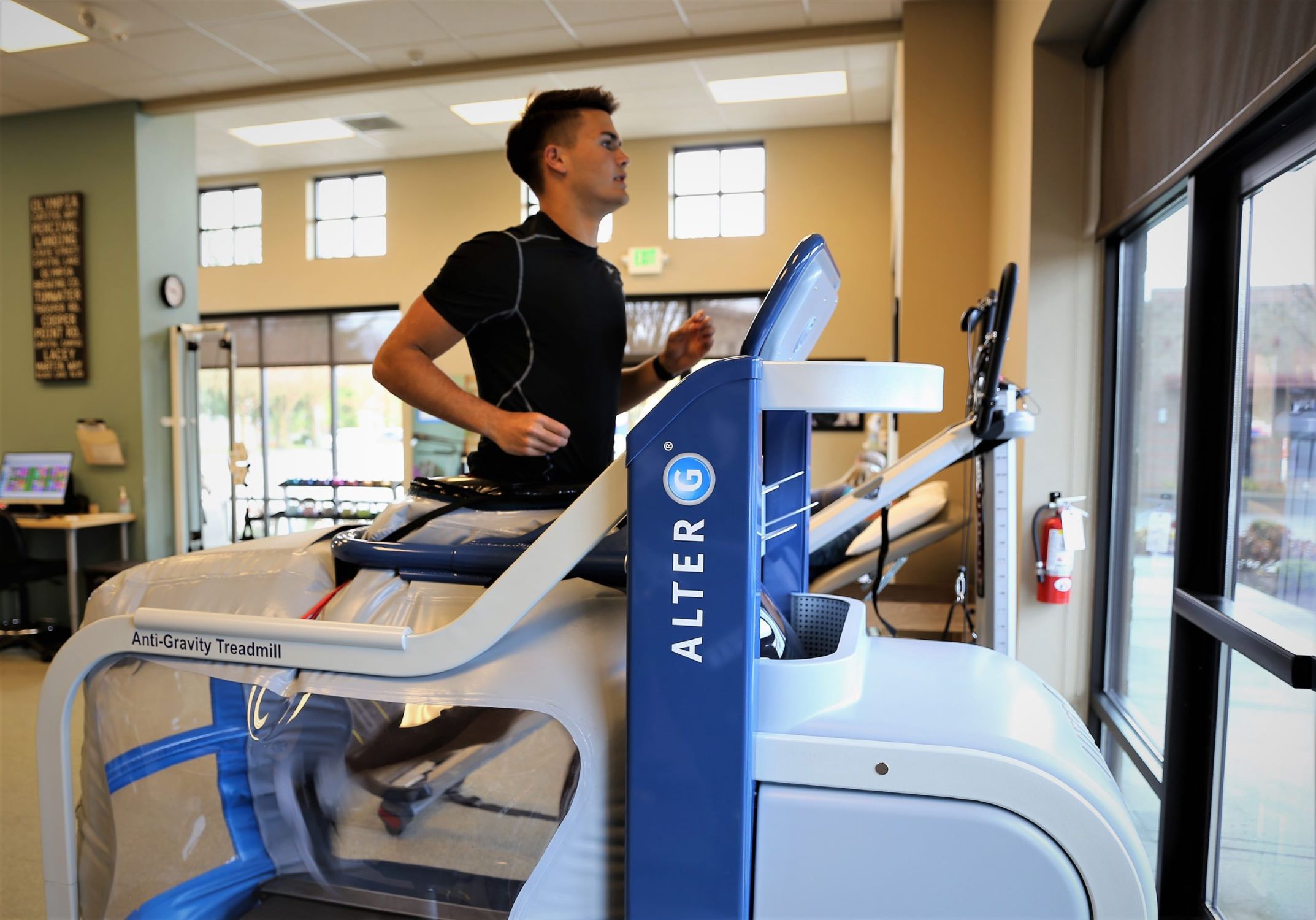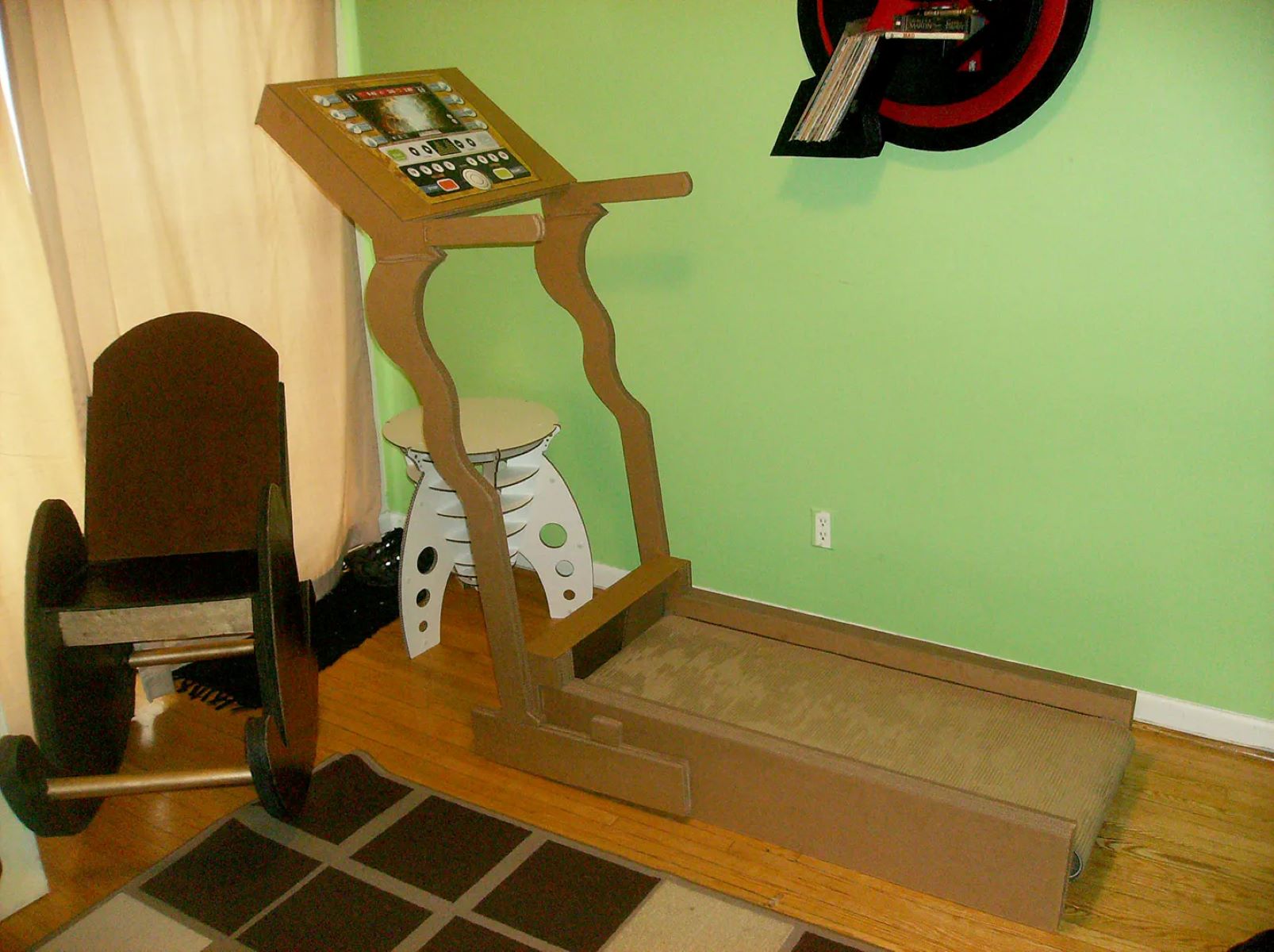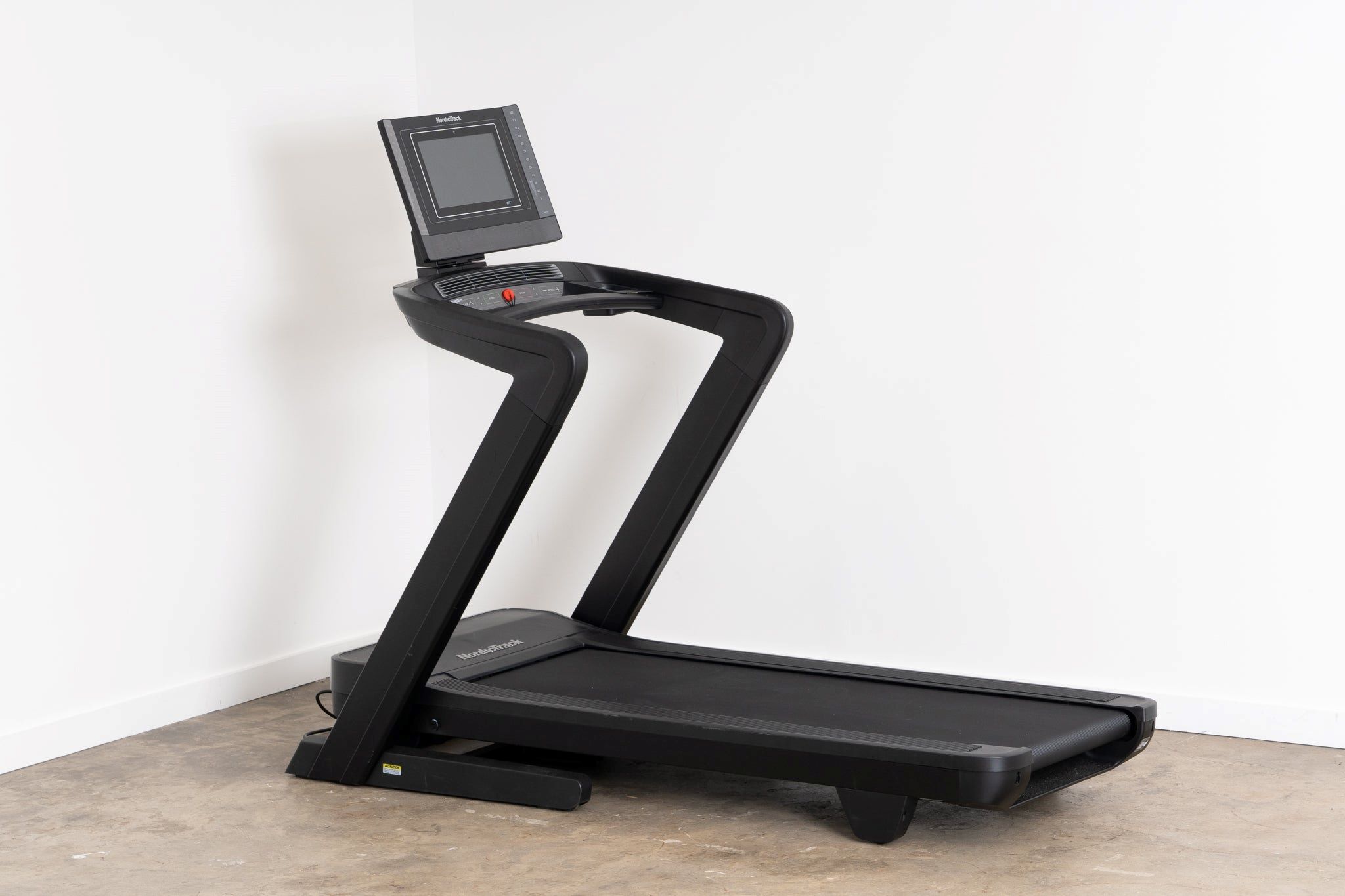

Featured
How Long On A Treadmill To Lose Weight
Modified: August 21, 2023
Discover the ideal duration on a treadmill for weight loss and uncover the featured workouts that guarantee results. Start shedding pounds today!
Introduction
Welcome to the world of treadmills and weight loss! If you’re looking to shed some pounds and improve your fitness, a treadmill can be an excellent tool to help you reach your goals. Treadmills offer a convenient and effective way to burn calories, increase cardiovascular endurance, and tone your muscles, all in the comfort of your own home or at the gym.
With so many weight loss programs and exercise options available, it’s crucial to choose a method that suits your lifestyle and preferences. The treadmill provides a versatile and customizable workout experience, allowing you to control the duration, speed, and intensity of your workouts.
In this article, we will explore how long you should spend on a treadmill to lose weight effectively. We’ll delve into the benefits of using a treadmill for weight loss, setting realistic goals, factors to consider for effective weight loss on a treadmill, designing an efficient workout plan, monitoring progress, and avoiding common mistakes.
Whether you’re a beginner or an experienced fitness enthusiast, this guide will provide you with valuable insights and practical tips to maximize your treadmill workouts and achieve your weight loss goals. So, let’s step on the treadmill and embark on an exciting fitness journey!
The Benefits of Using a Treadmill for Weight Loss
When it comes to weight loss, incorporating a treadmill into your fitness routine can offer a multitude of benefits. Let’s explore some of the advantages:
1. Burns Calories: One of the primary benefits of using a treadmill for weight loss is that it helps burn calories efficiently. Running or brisk walking on a treadmill can result in significant calorie expenditure, aiding in shedding those unwanted pounds.
2. Convenience and Accessibility: Unlike outdoor running, where weather conditions can be a deterrent, treadmills provide a convenient option to exercise indoors. Whether you prefer to walk, jog, or run, you can use a treadmill at any time of the day, regardless of the weather outside. It’s an accessible and time-efficient way to stay consistent with your workouts.
3. Controlled Environment: Treadmills allow you to control various factors, such as speed, incline, and intensity, which can be beneficial for weight loss. By adjusting these settings, you can challenge yourself and gradually increase the difficulty level of your workouts, boosting calorie burn and improving cardiovascular endurance.
4. Low Impact on Joints: For individuals with joint issues or those who prefer a low-impact workout, treadmills are an excellent option. The cushioned surface of the treadmill reduces impact on the joints compared to running on concrete or pavement, making it a safer and more comfortable choice for weight loss workouts.
5. Versatile Workout Options: Treadmills offer a wide range of workout options to target specific fitness goals. Whether you prefer steady-state cardio, interval training, or hill workouts, treadmills allow you to customize your exercise routine based on your preferences and fitness level.
6. Progress Tracking: Many treadmills come equipped with built-in tracking features that allow you to monitor your workout progress. From tracking distance and speed to counting calories burned, these features can keep you motivated and help you stay on track with your weight loss journey.
7. Mental and Emotional Well-being: Engaging in regular treadmill workouts can have a positive impact on your mental and emotional well-being. Exercise releases endorphins, which can boost mood, reduce stress, and improve overall mental health.
Incorporating a treadmill into your weight loss routine can provide countless benefits, making it a valuable tool on your fitness journey. The next section will focus on setting realistic weight loss goals to ensure long-term success.
Setting Realistic Weight Loss Goals
Before diving into your treadmill workouts for weight loss, it’s important to set realistic goals that align with your overall health and fitness objectives. Setting unrealistic expectations can lead to frustration and discouragement. Here are some key considerations for setting achievable weight loss goals:
1. Consult with a Healthcare Professional: It’s always a good idea to consult with a healthcare professional, such as a doctor or a registered dietitian, before embarking on a weight loss journey. They can provide valuable insights, assess your health status, and help you set realistic weight loss goals based on your individual needs and abilities.
2. Focus on Body Composition: Instead of solely focusing on the number on the scale, consider setting goals that prioritize body composition rather than just weight loss. Aim to reduce body fat percentage and increase lean muscle mass. This approach can lead to a healthier and more sustainable transformation.
3. Gradual and Sustainable Progress: It’s important to remember that healthy weight loss is a gradual process. Aim to lose 1-2 pounds per week, as this rate is considered safe and sustainable. Setting unrealistic expectations for rapid weight loss can result in muscle loss and other health complications.
4. Create Short- and Long-term Goals: Break down your weight loss journey into short-term and long-term goals. Short-term goals can be achieved within a few weeks or months, while long-term goals may take several months or even a year to accomplish. This approach allows for a sense of accomplishment along the way and keeps you motivated.
5. Consider Non-Scale Victories: Not all progress can be measured by the number on the scale. Consider incorporating non-scale victories into your goal-setting process. These can include increased energy levels, improved sleep quality, enhanced endurance, or fitting into a smaller clothing size. Celebrating these achievements can boost your confidence and keep you focused on the bigger picture.
6. Be Realistic and Flexible: Be honest with yourself and set goals that are achievable within your lifestyle and capabilities. Consider any time constraints, work commitments, or other factors that may impact your ability to stick to a rigid weight loss plan. Flexibility is key for long-term success.
7. Monitor and Adjust: Regularly monitor your progress and make adjustments as needed. If you find that you’re not seeing the desired results, reassess your workout routine, nutrition plan, or seek guidance from a professional. Remember that weight loss is a journey, and what works for one person may not work for another.
By setting realistic and attainable weight loss goals, you can stay motivated, track your progress, and make sustainable lifestyle changes. The next section will explore the ideal duration for treadmill workouts to maximize weight loss.
Determining the Right Duration for Treadmill Workouts
When it comes to determining the duration of your treadmill workouts for weight loss, several factors come into play. The appropriate duration can vary depending on your current fitness level, goals, and time availability. Here are some guidelines to help you determine the right duration for your treadmill workouts:
1. Start Slow and Progress Gradually: If you’re new to treadmill workouts or haven’t been exercising regularly, it’s important to start slow and gradually build up your endurance. Begin with shorter sessions, such as 20-30 minutes, and slowly increase the duration as you become more comfortable and confident.
2. Consider Your Fitness Level: Your current fitness level plays a significant role in determining the duration of your treadmill workouts. If you’re a beginner, it’s recommended to start with shorter sessions and gradually increase the time as your fitness level improves. If you’re already an experienced exerciser, you may be able to sustain longer treadmill workouts.
3. Set Realistic Time Goals: Consider your schedule and time availability when setting the duration for your treadmill workouts. It’s important to be realistic and choose a duration that you can consistently commit to. Consistency is key when it comes to seeing results and achieving your weight loss goals.
4. Consider Your Weight Loss Goals: The duration of your treadmill workouts should align with your weight loss goals. If you have a significant amount of weight to lose, longer workout sessions may be necessary to create a calorie deficit. However, it’s important to prioritize the quality of your workouts rather than solely focusing on duration.
5. Mix Up Your Workout Length: To challenge your body and prevent plateaus, consider incorporating a mix of workout lengths into your routine. For example, you can have shorter, high-intensity interval training (HIIT) sessions on some days and longer, steady-state cardio workouts on other days. This variation keeps your body guessing and boosts calorie burn.
6. Listen to Your Body: Pay attention to how your body feels during and after your treadmill workouts. If you’re feeling fatigued or experiencing excessive muscle soreness, it may be an indication that your workout duration is too long. Adjust the duration and intensity to ensure you’re allowing your body enough time to recover.
7. Quality over Quantity: Remember, the quality of your treadmill workouts is just as important as the duration. Focus on maintaining proper form, engaging the appropriate muscles, and challenging yourself within your comfort zone. A 30-minute high-intensity workout can be more effective than a longer, low-intensity session.
Keep in mind that the duration of your treadmill workouts is just one piece of the puzzle. A holistic approach that includes proper nutrition, rest, and other forms of exercise is crucial for overall weight loss success. The next section will explore the factors to consider for effective weight loss on a treadmill.
Factors to Consider for Effective Weight Loss on a Treadmill
When using a treadmill for weight loss, there are several factors to consider to ensure maximum effectiveness. These factors can significantly impact your calorie burn, endurance, and overall progress. Let’s explore some key factors to consider for effective weight loss on a treadmill:
1. Speed: The speed at which you walk or run on the treadmill affects the intensity and calorie burn of your workout. Gradually increase the speed over time to challenge yourself and push your limits. However, it’s important to find a pace that is sustainable and comfortable for you.
2. Incline: Adjusting the incline on your treadmill simulates running or walking uphill. This increases the intensity of your workout, engages different muscle groups, and boosts calorie burn. Incorporating incline variations into your workouts can help stimulate weight loss and improve cardiovascular fitness.
3. Intensity: The intensity of your treadmill workouts plays a crucial role in determining calorie burn and fat loss. Incorporating high-intensity interval training (HIIT) can be an effective way to maximize your calorie expenditure in a shorter amount of time. Alternating between periods of high-intensity effort and recovery periods enhances your metabolism and promotes fat burning.
4. Duration and Frequency: Consistency is key when it comes to weight loss on a treadmill. Aim for regular workouts, ideally 3-5 times per week, depending on your fitness level. The duration of your sessions can vary based on your goals, fitness level, and schedule, as discussed in the previous section.
5. Form and Technique: Maintaining proper form and technique while on the treadmill is important for preventing injuries and maximizing the effectiveness of your workouts. Focus on landing softly on your feet, maintaining an upright posture, engaging your core, and swinging your arms naturally.
6. Nutrition and Hydration: While the treadmill can aid in weight loss, it’s essential to support your efforts with a balanced and nutritious diet. Fuel your body with whole, nutrient-dense foods and stay hydrated before, during, and after your treadmill workouts to optimize performance and recovery.
7. Rest and Recovery: Adequate rest and recovery are crucial components of any fitness routine, including treadmill workouts for weight loss. Allow your body time to recover between sessions to prevent overtraining and reduce the risk of injury. Listen to your body and take rest days when needed.
8. Consistency and Patience: Effective weight loss on a treadmill requires consistency and patience. Results may not be immediate, but with a dedicated and consistent approach, you will see progress over time. Stay committed to your workouts and trust the process.
By considering these factors and incorporating them into your treadmill workouts, you can optimize your weight loss journey and achieve your fitness goals. The next section will delve into designing an effective treadmill workout plan.
Designing an Effective Treadmill Workout Plan
Designing a structured treadmill workout plan is crucial for achieving your weight loss goals efficiently and effectively. Having a well-planned routine keeps you accountable, ensures variety in your workouts, and helps you progress over time. Here are some steps to consider when designing an effective treadmill workout plan:
1. Set Clear Objectives: Clearly define your weight loss goals and what you want to achieve through your treadmill workouts. Whether it’s losing a certain amount of weight, improving cardiovascular endurance, or toning specific muscle groups, having a clear objective will guide your workout plan.
2. Determine Workout Frequency: Decide how many days per week you can dedicate to treadmill workouts. Aim for consistency, whether it’s three, four, or five days per week, based on your schedule and fitness level.
3. Choose Workout Duration: Refer to the previous sections and determine the appropriate duration for your treadmill sessions. Start with a duration that is manageable for your current fitness level and gradually increase it over time.
4. Include a Warm-up and Cool-down: Dedicate a few minutes to warm up before each treadmill session to prepare your body for the workout ahead. This can include dynamic stretches and a light jog or fast-paced walk. Similarly, cool down with a few minutes of walking and static stretches to help your body recover and reduce muscle soreness.
5. Mix Up Your Workouts: Incorporate a mixture of workout intensities and variations to keep your body challenged and avoid boredom. Alternate between steady-state cardio workouts, HIIT sessions, and incline workouts to target different muscle groups and increase calorie burn.
6. Monitor Heart Rate: Consider using a heart rate monitor to help gauge the intensity of your workouts. This can help you stay within your target heart rate zone for optimal fat burning and cardiovascular fitness. Consult a fitness professional to determine your target heart rate for weight loss.
7. Gradually Increase Intensity: As your fitness improves, gradually increase the intensity of your treadmill workouts. This can be achieved by increasing the speed, incorporating higher incline levels, or extending the duration of your high-intensity intervals. Challenge yourself while still maintaining proper form and minimizing the risk of injury.
8. Track and Evaluate Progress: Keep a record of your workouts, noting the duration, intensity, and any observations or achievements. Regularly evaluate your progress to identify areas of improvement and make necessary adjustments to your workout plan. This will help you stay motivated and see how far you’ve come.
9. Seek Professional Guidance: If you’re new to exercise or are unsure about designing a treadmill workout plan, consider consulting with a fitness professional. They can provide personalized guidance and create a tailored plan based on your goals and fitness level.
By following these steps and designing an effective treadmill workout plan, you’ll be on your way to achieving your weight loss goals and improving your overall fitness. The next section will explore the benefits of incorporating HIIT (High-Intensity Interval Training) on the treadmill.
Incorporating HIIT (High-Intensity Interval Training) on the Treadmill
High-Intensity Interval Training (HIIT) is a popular and effective workout technique that involves alternating between periods of high-intensity effort and short recovery periods. HIIT can be a powerful tool for weight loss and improving cardiovascular fitness when incorporated into your treadmill workouts. Here’s how to effectively incorporate HIIT on the treadmill:
1. Warm-Up: Begin your workout with a 5-10 minute warm-up at a moderate pace. This helps prepare your muscles and cardiovascular system for the intense intervals to come.
2. Interval Structure: Structure your HIIT session with shorter, intense intervals followed by active recovery periods. For example, alternate between 30 seconds of maximal effort sprinting or fast running and 60 seconds of walking or slow jogging to recover. Repeat this cycle for your desired duration.
3. Vary Intensity: During the high-intensity intervals, push yourself to work at a challenging pace that gets your heart rate up and leaves you breathless. The key is to exert maximum effort during these intervals.
4. Control Your Recovery: Use the recovery periods to catch your breath and bring your heart rate down. This active recovery phase allows you to recover sufficiently for the next high-intensity interval. Maintain a steady pace during the recovery periods, avoiding a complete stop.
5. Gradual Progression: As your fitness level improves, gradually increase the duration or intensity of the high-intensity intervals. You can also decrease the duration of recovery periods to challenge yourself further. Progression is essential to continue challenging your body and improving fitness.
6. Focus on Form: While intensity is crucial during HIIT, it’s equally important to maintain proper form and technique on the treadmill. Focus on maintaining a tall posture, pumping your arms, and landing softly on your feet.
7. Monitor Heart Rate: Consider using a heart rate monitor to ensure you’re working within your target heart rate zone during the high-intensity intervals. Aim to reach around 80-90% of your maximum heart rate, although individual targets may vary.
8. Remember the Cool-Down: Finish your HIIT session with a 5-10 minute cool-down at a lower intensity. This helps gradually bring your heart rate down and allows your body to recover.
Incorporating HIIT on the treadmill can provide numerous benefits, including increased calorie burn, improved cardiovascular fitness, and time efficiency. However, it’s important to listen to your body, start at your own fitness level, and gradually progress to avoid overexertion or injury. The next section will explore the importance of monitoring progress and making adjustments to your treadmill workouts.
Monitoring Progress and Making Adjustments
Monitoring your progress and making necessary adjustments to your treadmill workouts is a crucial component of achieving your weight loss goals. By regularly assessing your performance, you can stay on track, overcome plateaus, and make the necessary changes to optimize your progress. Here are some key steps to consider:
1. Track Your Workouts: Keep a record of your treadmill workouts, including the duration, speed, distance covered, and any other relevant details. You can use a fitness app, a notebook, or a spreadsheet to track your progress. Having this information allows you to see how far you’ve come and identify patterns or trends.
2. Monitor Weight Loss and Body Composition: Keep track of your weight loss progress along the way. Regularly weigh yourself and consider taking measurements of your body, such as waist circumference, to assess changes in body composition. Remember that weight loss is not the only indicator of progress, as you may be gaining muscle while losing fat.
3. Assess Performance and Effort Level: Reflect on your treadmill workouts and assess your performance and effort level. Are you able to maintain a consistent pace or increase your speed? How challenging are your workouts? Rate your perceived exertion on a scale of 1 to 10 during each session. This self-assessment can provide valuable insights into the effectiveness and intensity of your workouts.
4. Set Achievable Goals: Based on your progress and performance assessment, set new achievable goals to continue challenging yourself. These goals can include increasing the duration of your workouts, improving your speed, or incorporating new workout techniques. Having specific and measurable targets helps maintain motivation and provides a sense of accomplishment.
5. Adjust Intensity and Duration: As you progress, it may be necessary to adjust the intensity and duration of your treadmill workouts. Increase the speed, incline, or duration of your intervals to challenge your body and continue making progress. Conversely, if you’re feeling fatigued or experiencing excessive muscle soreness, consider scaling back the intensity or taking extra rest days.
6. Incorporate Strength Training: To maximize weight loss and overall fitness, consider incorporating strength training exercises alongside your treadmill workouts. Strength training helps build lean muscle mass, boosts metabolism, and enhances overall body composition. It can also help prevent injuries and improve overall strength and stability.
7. Listen to Your Body: Pay attention to your body’s signals and listen to what it needs. If you’re feeling excessively fatigued or experiencing pain or discomfort, take a step back and give yourself time to recover. Pushing through extreme fatigue or pain may lead to overtraining or injury, hindering your progress in the long run.
8. Seek Professional Guidance: If you’re unsure about how to monitor progress or make adjustments, consider seeking guidance from a fitness professional. They can provide expertise, personalized advice, and tailored workout plans to help you reach your weight loss goals in a safe and effective manner.
Monitoring your progress and making adjustments to your treadmill workouts is an ongoing process. Regular assessment and implementation of changes will help you stay motivated, break through plateaus, and achieve long-term success. The final section will explore common mistakes to avoid on the treadmill for effective weight loss.
Avoiding Common Mistakes on the Treadmill for Weight Loss
When it comes to using the treadmill for weight loss, it’s important to be aware of common mistakes that can hinder your progress. By avoiding these mistakes, you can maximize the effectiveness of your workouts and achieve optimal results. Let’s explore some common treadmill mistakes and how to avoid them:
1. Poor Posture: Maintaining proper posture on the treadmill is crucial to prevent strain on your muscles and joints. Keep your head up, shoulders relaxed, and core engaged. Avoid leaning forward or slouching, as this can lead to unnecessary tension and discomfort.
2. Holding onto the Handrails: Holding onto the handrails of the treadmill can disrupt your natural running or walking form and reduce the intensity of your workout. Practice proper balance and gradually wean yourself off the handrails. If you feel the need for support, lightly touch the handrails but avoid relying on them for stability.
3. Using the Same Routine: Sticking to the same treadmill routine can lead to a plateau in weight loss and boredom. Vary your workouts by incorporating different speeds, inclines, and workout formats. This challenges your body and keeps your workouts fresh and exciting.
4. Neglecting Warm-up and Cool-down: Skipping the warm-up and cool-down phases is a common mistake that can increase the risk of injury. Always take the time to warm up your muscles and gradually increase your heart rate before starting your main workout. Likewise, cool down with a few minutes of light activity and stretching to allow your body to recover properly.
5. Overdoing Steady-State Cardio: While steady-state cardio workouts have their place, relying solely on this type of workout may not be the most efficient way to lose weight. Incorporating interval training, such as HIIT, can boost your calorie burn and increase the intensity of your workouts. Mix up your routine to keep your body challenged.
6. Not Paying Attention to Intensity: It’s important to gauge the intensity of your treadmill workouts to ensure you’re challenging yourself enough. Avoid a leisurely pace or staying in your comfort zone for the entire duration of your workout. Aim for a moderate to high-intensity level that gets your heart rate up and leaves you feeling challenged.
7. Neglecting Strength Training: While the treadmill is great for cardiovascular exercise, neglecting strength training is a common mistake. Strength training helps build muscle, which in turn increases your metabolism and enhances overall weight loss. Incorporate strength training exercises such as bodyweight exercises, dumbbell workouts or resistance bands into your routine.
8. Not Listening to Your Body: Your body knows best. Listen to its cues and take rest days when needed. Pushing through extreme fatigue or pain can lead to overtraining and injury. Respect your body’s limits, recover adequately, and make adjustments to your workouts as necessary.
By avoiding these common mistakes on the treadmill, you can optimize your weight loss efforts and make progress towards your goals. Remember to stay consistent, listen to your body, and seek professional guidance when needed. Now that you’re equipped with this knowledge, get ready to enjoy productive and effective treadmill workouts!
Conclusion
Congratulations on reaching the end of this comprehensive guide on using the treadmill for weight loss! We’ve explored the benefits of incorporating a treadmill into your fitness routine, setting realistic weight loss goals, determining the right duration for your workouts, and avoiding common mistakes. By considering these factors and following the tips provided, you can maximize the effectiveness of your treadmill workouts and achieve your weight loss goals.
Remember, consistency is key when it comes to weight loss and overall fitness. Stay committed to your treadmill workouts, but also remember to listen to your body, rest when needed, and make adjustments along the way. Every individual is unique, so it’s essential to tailor your workouts to fit your specific needs and fitness level.
Incorporating variety into your treadmill routine, such as HIIT sessions, interval training, incline workouts, and incorporating strength training, can help keep your workouts engaging and challenging. Don’t be afraid to mix it up and explore different training methods until you find what works best for you.
Lastly, always remember the importance of a well-balanced and nutritious diet to support your weight loss efforts. Combine your treadmill workouts with a healthy eating plan to optimize your results and achieve a sustainable, healthy lifestyle.
Now that you have the knowledge and tools to make the most of your treadmill workouts for weight loss, it’s time to take action. Lace up your shoes, step onto that treadmill, and embark on your fitness journey. Stay motivated, be patient with yourself, and celebrate every milestone along the way. You’ve got this!









